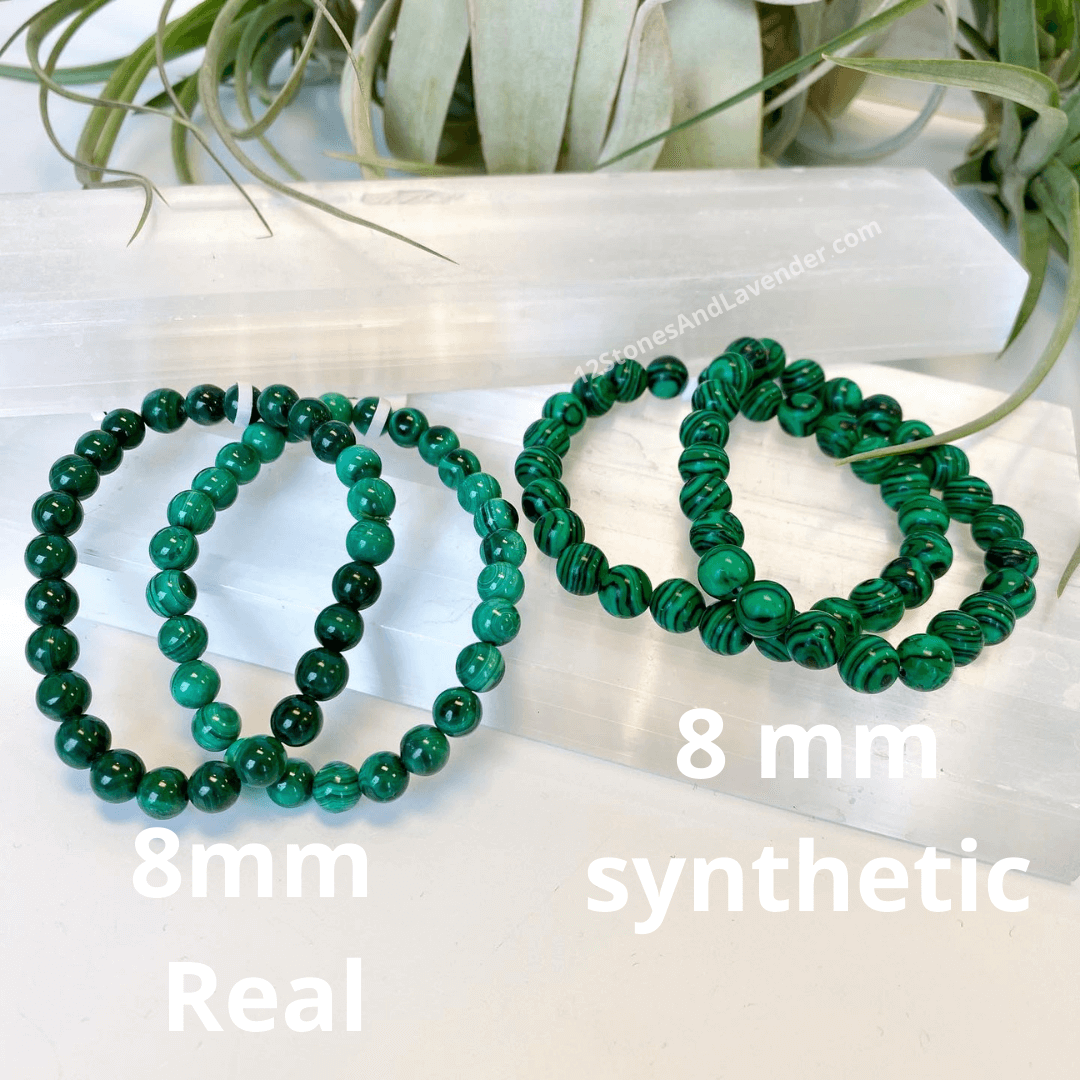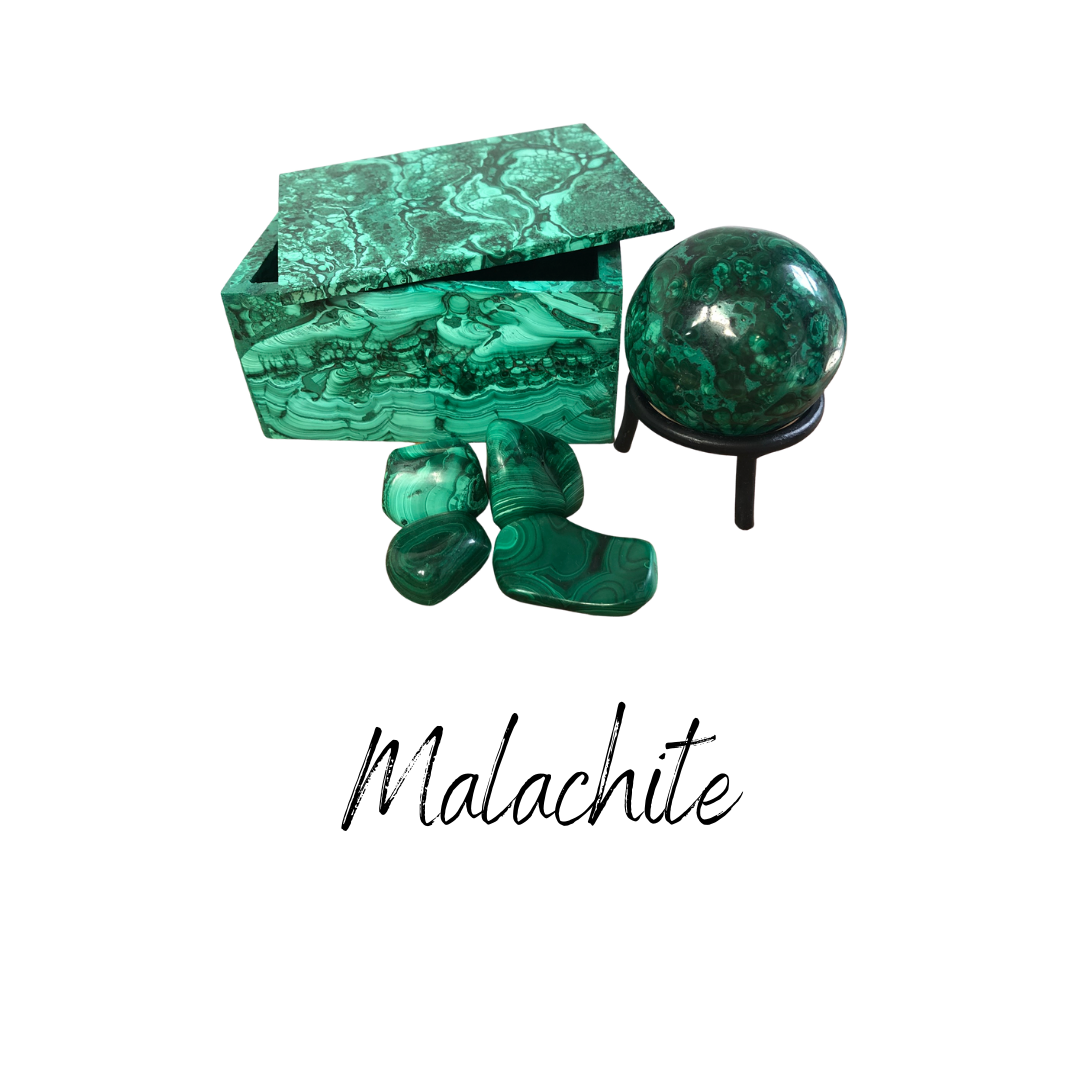
Malachite
Key Words:
Calming · Healing · Loyalty · Leadership · Protection · Wisdom · Comfort · Balance · Peace · Self-understanding · Positive Transformation
Malachite is a vibrant green copper carbonate hydroxide mineral with the chemical composition Cu₂(CO₃)(OH)₂. It was one of the earliest known ores used to produce copper, and while it’s no longer mined for that purpose, it remains highly valued for jewelry, decorative carvings, and energetic applications.
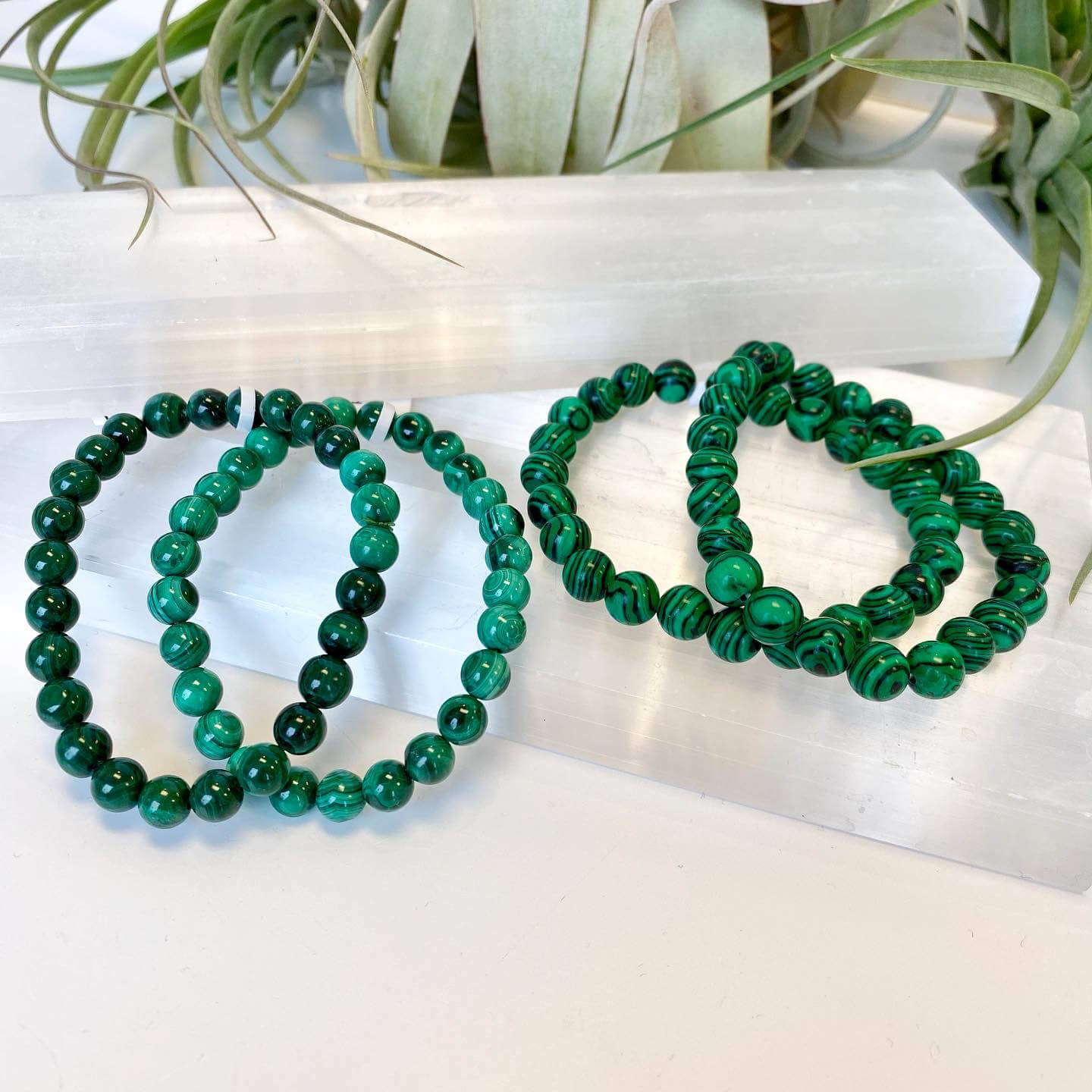
This stone has been prized for thousands of years—not only for its dramatic banded green appearance but also for its symbolic association with growth, transformation, and protection. Malachite has historically been carved into sculptures, used in pigments, and polished into beads and cabochons.

Malachite is relatively soft, with a Mohs hardness of 3.5 to 4. It has perfect cleavage, meaning it can easily chip or scratch and should be handled gently, especially in jewelry. It is also sensitive to heat, weak acids, and moisture. Some pieces may be waxed to enhance luster and stability.

Often described as a stone of transformation, Malachite is thought to support breaking unwanted patterns and creating space for new beginnings. Many people use it during emotional healing work, as its frequency is believed to reveal subconscious blocks while supporting self-awareness and personal responsibility.
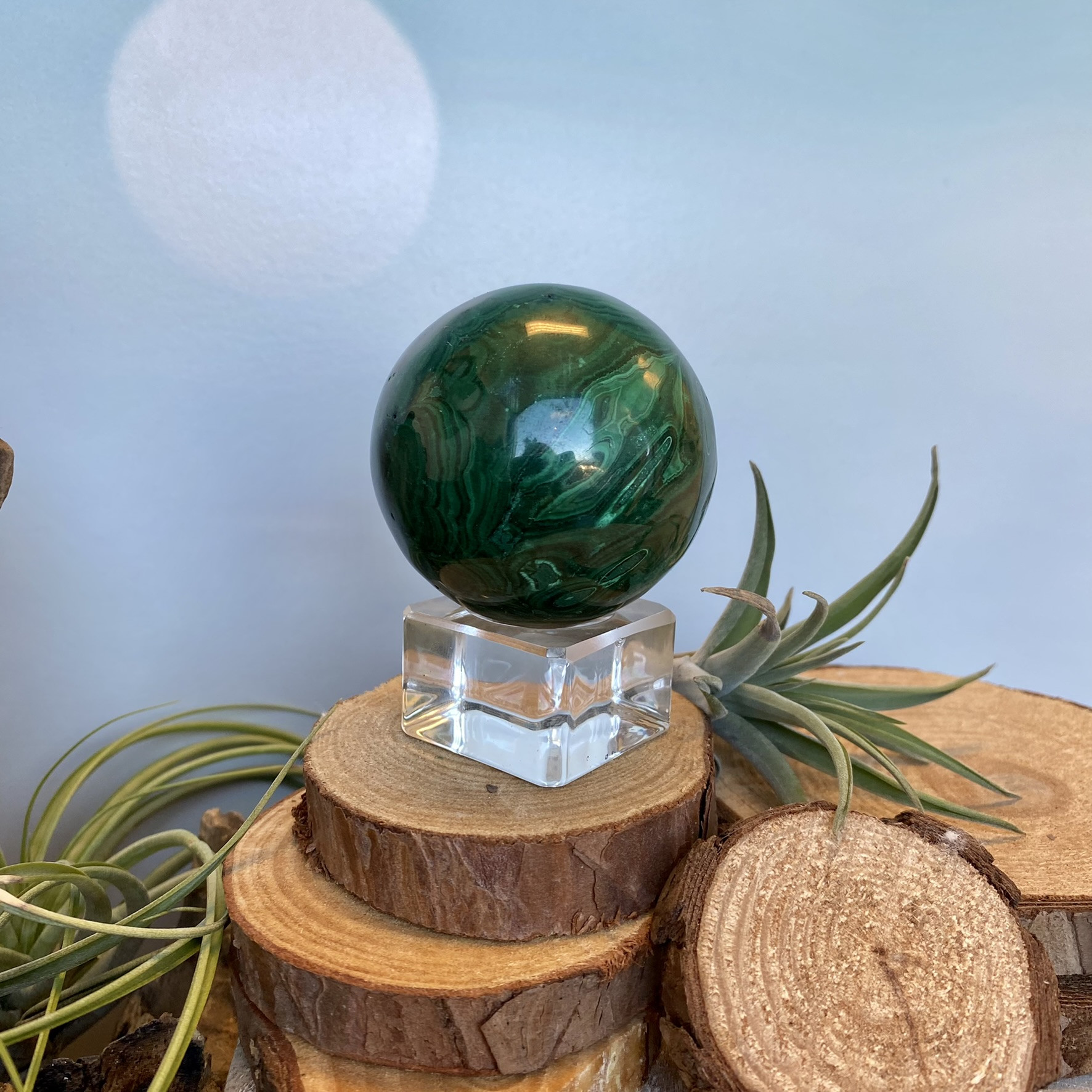
Malachite is also known for its protective qualities. It’s said to act like an energetic shield, helping guard against negative influences and emotional overwhelm. This makes it a useful companion for those who are sensitive to others’ moods or who are working to set healthy personal boundaries.
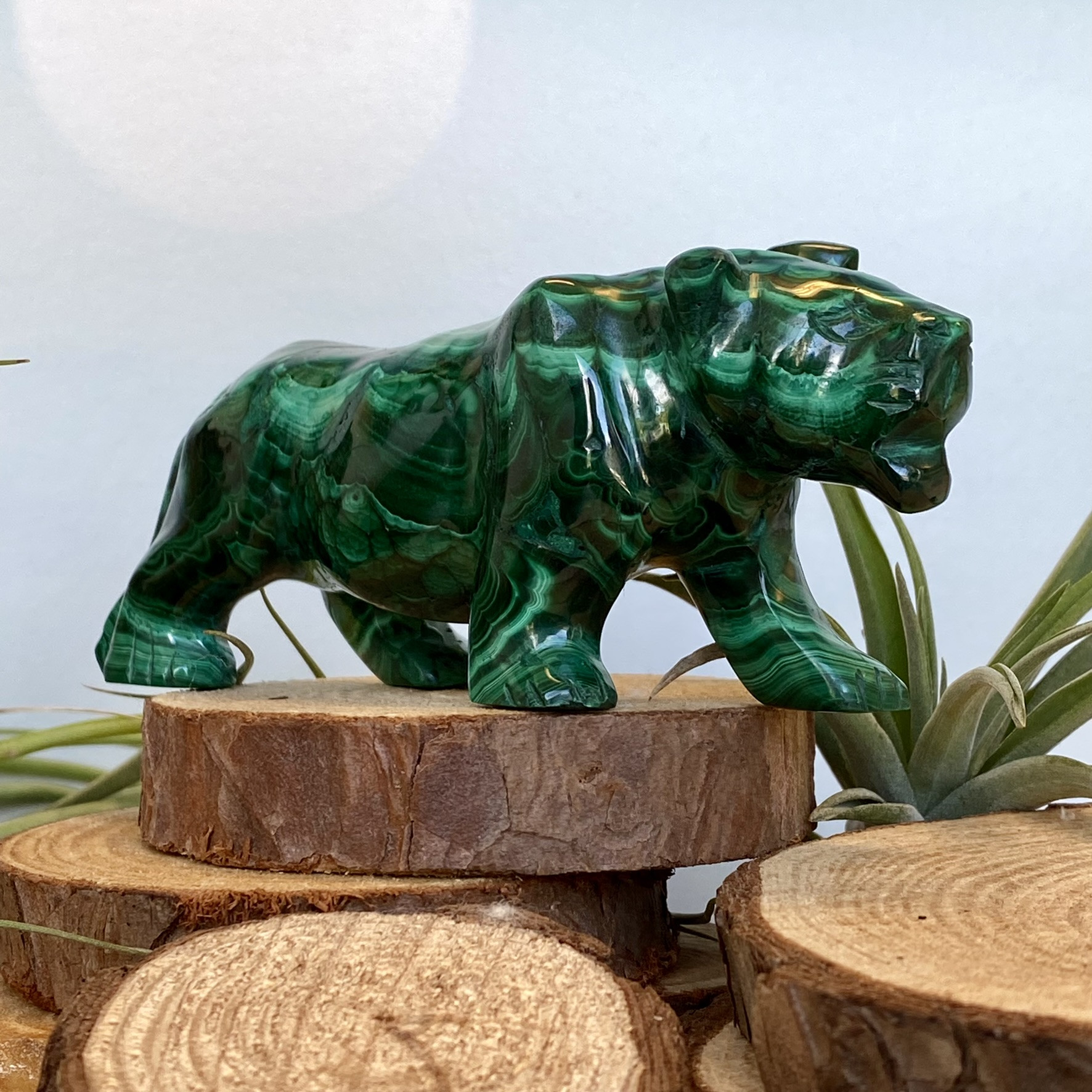
The frequency of malachite is also associated with manifestation. It encourages you to focus on what you want to attract, rather than what you fear or wish to avoid. It supports forward momentum, intention-setting, and the practice of recognizing beauty in the present moment.
Its strong connection to heart-centered healing makes it a favorite among those seeking more emotional openness, peaceful communication, and personal alignment.
Important Note: Malachite in its raw form contains copper and may be toxic if handled improperly. Always avoid breathing dust from broken or unfinished pieces. Use only polished malachite for handling, display, or placement near the body.
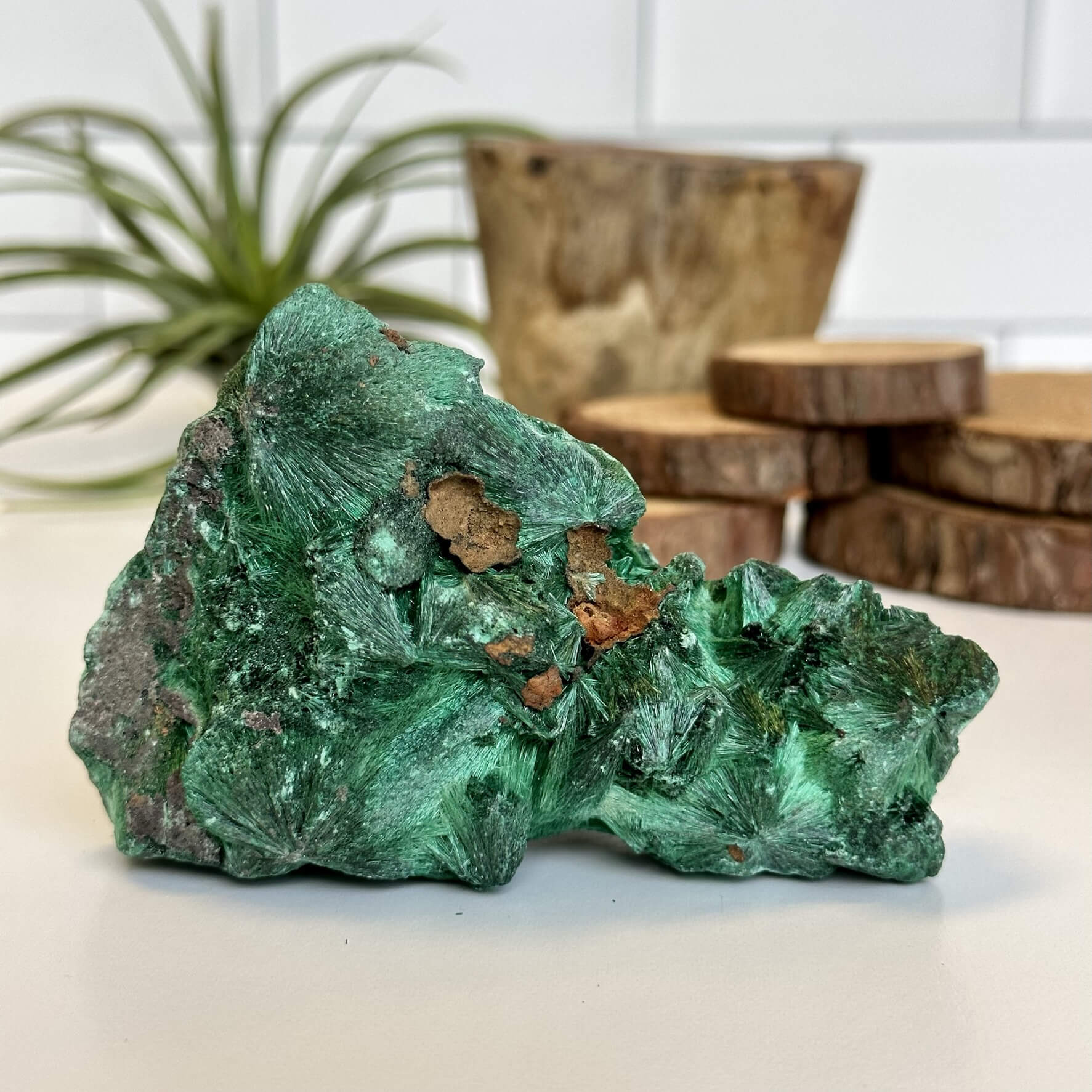
A Note About Synthetic and Reconstituted Malachite
Because of its beauty and popularity, malachite is often imitated or reproduced using synthetic or reconstituted materials.
Synthetic malachite is man-made in a lab. While it looks similar, its banding is often too regular or lacks the natural variations and chaotic layering seen in true malachite. Poor-quality synthetics may also appear overly bright or unnatural in color.
Reconstituted malachite is made by grinding down lower-grade malachite and binding it with resins or dyes to create blocks for carving or beads. This version still contains real malachite, but the structure has been altered, and the energy may be less pure or diluted.
Experienced sellers and crystal workers can often spot these versions by the banding, sheen, and feel of the stone. At 12 Stones and Lavender, we always aim to clearly label and source high-quality polished malachite so you know exactly what you're getting.
